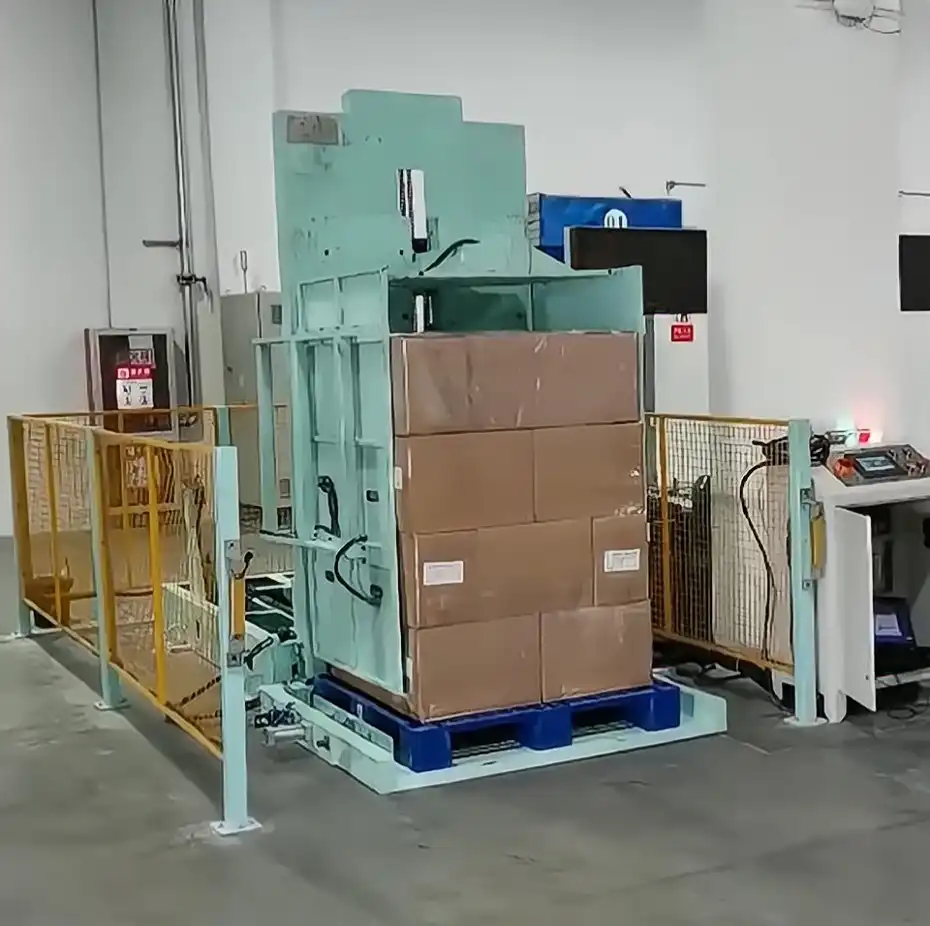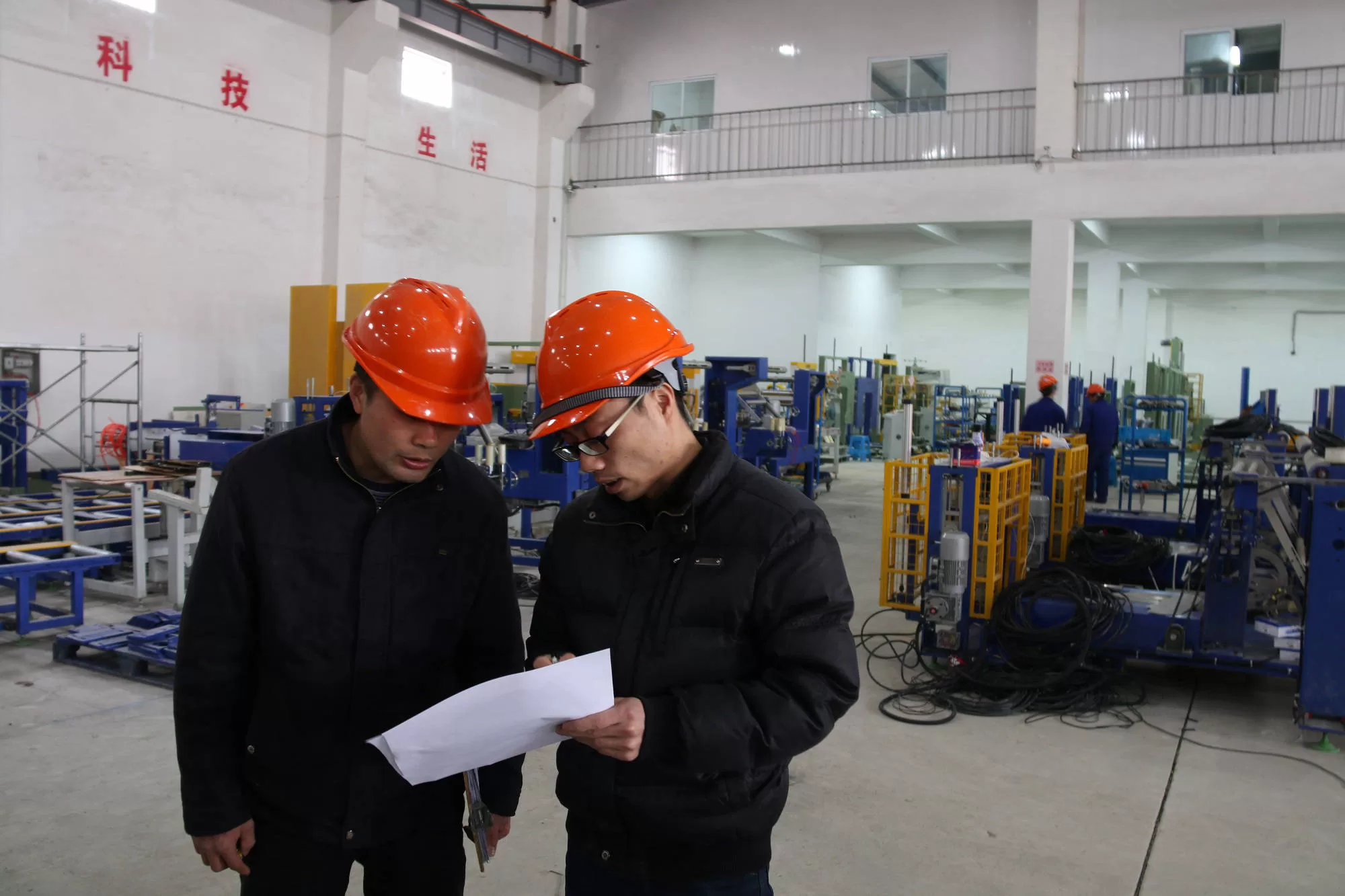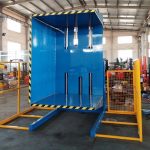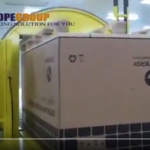Pallet Inverter Design Comparison: Which Layout Fits Your Warehouse?
- Pallet Inverter Design Comparison: Which Layout Fits Your Warehouse?
- Introduction
- 1. What is a Pallet Inverter?
- 2. Key Benefits of Using a Pallet Inverter
- 3. Understanding Different Pallet Inverter Designs
- 4. Choosing Between Single Clamp and Dual Clamp Designs
- 5. Pallet Inverters with 180-Degree Rotation
- 6. Pallet Inverters with 90-Degree Tilt
- 7. Manual vs. Automatic Pallet Inverters
- 8. Free-standing vs. Integrated Pallet Inverters
- 9. Industry-Specific Considerations
- 10. How to Choose the Right Pallet Inverter for Your Warehouse
- Conclusion

Introduction
Warehouses are the lifeblood of any logistics and supply chain operation. Efficiency, safety, and the smart use of space are critical factors that define success in warehouse management. One machine that significantly influences these factors is the pallet inverter. Pallet inverters are vital for managing pallet exchanges, product rotation, and handling damaged goods without manually unloading heavy materials. But with several designs available, selecting the right pallet inverter for your warehouse can be challenging.
In this article, we’ll break down the different pallet inverter designs, comparing their features, benefits, and suitability for various warehouse environments. By the end, you’ll have a clearer understanding of which layout best fits your warehouse's specific needs.
1. What is a Pallet Inverter?
A pallet inverter is a specialized machine used in warehouses to flip or rotate pallet loads. The main function of a pallet inverter is to quickly and safely invert loads so that the bottom pallet can be swapped without unloading the materials. This is especially useful in operations where damaged pallets need to be replaced, goods must be rotated for quality control, or specific handling rules demand the exchange of pallets.
The efficiency of this process reduces labor costs and enhances safety by minimizing manual handling. Pallet inverters are commonly found in industries like food and beverage, pharmaceuticals, chemicals, and packaging, where the stability and condition of pallets are critical.
2. Key Benefits of Using a Pallet Inverter
Before diving into the design comparison, it's essential to understand why pallet inverters are so valuable in warehouse operations. Some of the key benefits include:
- Enhanced Efficiency: Pallet inverters automate the process of flipping heavy loads, significantly reducing the time needed to swap pallets.
- Labor Savings: With a pallet inverter, fewer workers are required to handle pallet exchanges, lowering overall labor costs.
- Improved Safety: Manual handling of heavy loads is a major safety risk. Pallet inverters minimize this risk by automating the load-flipping process, ensuring safer working conditions.
- Space Optimization: By speeding up pallet exchanges, pallet inverters help free up space in high-traffic areas, improving the flow of goods in the warehouse.
3. Understanding Different Pallet Inverter Designs
Not all pallet inverters are created equal. There are various designs, each tailored to different types of operations. Let's take a closer look at the key designs on the market:
a) Stationary Pallet Inverters
Stationary pallet inverters are fixed in one location and designed for high-volume environments where the same task is repeated consistently. This design is particularly effective in warehouses with designated areas for pallet flipping. Some key features include:
- High stability due to their fixed position.
- Large weight capacity, making them ideal for industrial operations.
- Minimal maintenance as there are fewer moving parts compared to mobile options.
This design is most suited for large warehouses with continuous pallet exchange needs and fixed workflow patterns.
b) Mobile Pallet Inverters
Mobile pallet inverters offer flexibility in operations. These units are equipped with wheels or tracks, allowing them to be moved to different parts of the warehouse. This makes them ideal for businesses that don’t have a fixed location for pallet exchanges or where space constraints are a concern.
Some benefits of mobile pallet inverters include:
- Greater versatility in handling pallet exchanges across various warehouse locations.
- Space-saving design, as they can be moved out of the way when not in use.
- Ideal for smaller warehouses with changing operational needs.
However, mobile designs may require more frequent maintenance due to their mobility mechanisms and may not be as stable under heavy loads as their stationary counterparts.
4. Choosing Between Single Clamp and Dual Clamp Designs
Another major design distinction in pallet inverters is between single-clamp and dual-clamp models.
a) Single Clamp Pallet Inverters
Single-clamp inverters use one clamp to hold and rotate the load. This design is more compact and typically less expensive. However, it is best suited for smaller, lighter loads that don’t require heavy-duty rotation.
- Best for lightweight products: Ideal for industries like pharmaceuticals or food where loads are relatively light.
- Cost-effective: Due to the simpler design, these inverters are generally more affordable.
b) Dual Clamp Pallet Inverters
Dual-clamp inverters feature two clamping mechanisms, providing more balanced pressure and increased stability. This design is ideal for heavier loads or fragile products that require careful handling.
- Best for heavy-duty operations: Ideal for industries such as chemicals or heavy manufacturing.
- More precise handling: The dual clamps ensure that loads are secured more evenly, reducing the risk of product damage.
5. Pallet Inverters with 180-Degree Rotation
Many pallet inverters are designed to rotate loads 180 degrees, making them perfect for flipping pallets and handling products that must be turned upside down, such as liquids or materials stored in containers. These inverters are most effective in industries where product quality depends on rotation, like food processing or pharmaceuticals.
- Full rotation for complete inversion: Useful in quality control and inspection processes.
- Fast and efficient: These inverters speed up operations significantly when full pallet rotation is required.
6. Pallet Inverters with 90-Degree Tilt
For operations that don’t require a full inversion but still need some product rotation, a 90-degree pallet inverter can be the perfect solution. This design allows for tilting loads to a 90-degree angle, making it easier to access certain parts of the load or replace pallets without fully inverting the stack. It’s particularly useful for goods that could be damaged by a complete flip, such as fragile items or irregularly shaped products.
- Prevents product damage: Useful for fragile or sensitive goods that can't withstand full inversion.
- Speeds up handling: This tilt design can streamline processes without compromising product integrity.
- Versatile applications: Particularly effective in warehouses handling diverse goods.

Get Your Best Solution !
7. Manual vs. Automatic Pallet Inverters
Pallet inverters can either be manual or automatic, with the difference primarily coming down to how the machine is operated.
a) Manual Pallet Inverters
Manual inverters require an operator to physically engage with the machine to control the load inversion. These are usually less expensive but demand more labor, making them best suited for smaller warehouses or operations with limited budgets. Key characteristics include:
- Lower upfront cost: Manual machines are generally more affordable, making them attractive to smaller businesses.
- More labor-intensive: These machines require consistent operator input, which can increase labor costs over time.
- Best for low-volume warehouses: Ideal for businesses where pallet exchanges are less frequent.
b) Automatic Pallet Inverters
Automatic pallet inverters use programmed controls to manage the inversion process with minimal human intervention. These machines are designed for high-volume warehouses that need quick, efficient, and consistent pallet exchanges. Although they have a higher initial cost, the efficiency gained through automation often outweighs the expense. Key benefits include:
- Increased efficiency: Automatic machines speed up operations, making them perfect for busy warehouses.
- Labor savings: Less operator involvement is required, reducing the need for manual labor.
- Best for high-volume operations: If your warehouse handles a large number of pallet exchanges daily, automation is the ideal choice.
8. Free-standing vs. Integrated Pallet Inverters
Another critical comparison when selecting a pallet inverter is whether to choose a free-standing or integrated model.
a) Free-standing Pallet Inverters
Free-standing inverters operate independently of other warehouse equipment. This design is highly flexible, as it doesn’t require integration into existing machinery or conveyor systems. Free-standing pallet inverters can be placed in any location and are ideal for smaller or medium-sized warehouses where flexibility is crucial.
- Flexibility in placement: Can be moved and relocated as needed.
- Lower initial setup: No need for complex integration with existing equipment.
- Ideal for smaller warehouses: Useful for businesses that need adaptable equipment.
b) Integrated Pallet Inverters
Integrated pallet inverters are built into a larger warehouse system, often working alongside conveyor belts or other automated material-handling equipment. This setup allows for a seamless transition of goods and can be fully automated for maximum efficiency. Integrated pallet inverters are typically found in large-scale operations that handle high volumes of pallet transfers.
- Fully automated processes: Ideal for high-volume warehouses with large-scale automation.
- Higher initial investment: Due to the integration and setup required, these systems are more costly upfront.
- Increased operational efficiency: Seamless integration with other warehouse systems maximizes throughput and minimizes delays.
9. Industry-Specific Considerations
When selecting the right pallet inverter design, it’s important to consider your specific industry needs. Different industries have unique requirements for pallet handling, which should guide your choice of pallet inverter design.
a) Food and Beverage Industry
In the food and beverage industry, hygiene and safety are critical. Pallet inverters with stainless steel components are often necessary to maintain cleanliness and prevent contamination. Additionally, automatic pallet inverters reduce the risk of human contact with food products, which is crucial for quality control.
b) Pharmaceuticals
Pharmaceutical companies need precise and careful handling of products to ensure compliance with safety regulations. Pallet inverters that offer gentle handling and precision clamping can help reduce the risk of product damage or contamination, making dual-clamp inverters an excellent choice.
c) Manufacturing
In heavy industries like manufacturing, heavy-duty pallet inverters capable of handling large, bulky items are necessary. Dual-clamp or high-capacity stationary inverters are often the best fit for these environments, ensuring both stability and durability.
10. How to Choose the Right Pallet Inverter for Your Warehouse
When deciding on the best pallet inverter design for your warehouse, consider the following factors:
- Warehouse Size: Larger warehouses may benefit from stationary or integrated pallet inverters that can handle high volumes, while smaller warehouses may opt for mobile or free-standing models for greater flexibility.
- Load Weight and Size: Heavy-duty operations require dual-clamp, stationary inverters that can handle larger loads without compromising on safety.
- Operational Volume: High-volume warehouses with frequent pallet exchanges will see greater efficiency from automatic or integrated pallet inverters, while smaller operations may find manual inverters more suitable.
- Industry Requirements: Specific industries, such as food and pharmaceuticals, require more specialized pallet inverters to meet hygiene and regulatory standards.
Conclusion
Selecting the right pallet inverter design for your warehouse is crucial for optimizing efficiency, improving safety, and reducing operational costs. By understanding the various types of pallet inverters—from stationary and mobile designs to manual vs. automatic options—you can make an informed decision that aligns with your warehouse's unique needs. Whether you operate in the food industry, manufacturing, or pharmaceuticals, there’s a pallet inverter layout that fits your operational requirements perfectly. Investing in the right pallet inverter will not only streamline your workflow but also enhance productivity and safety in the long term.

Get Your Best Solution !








